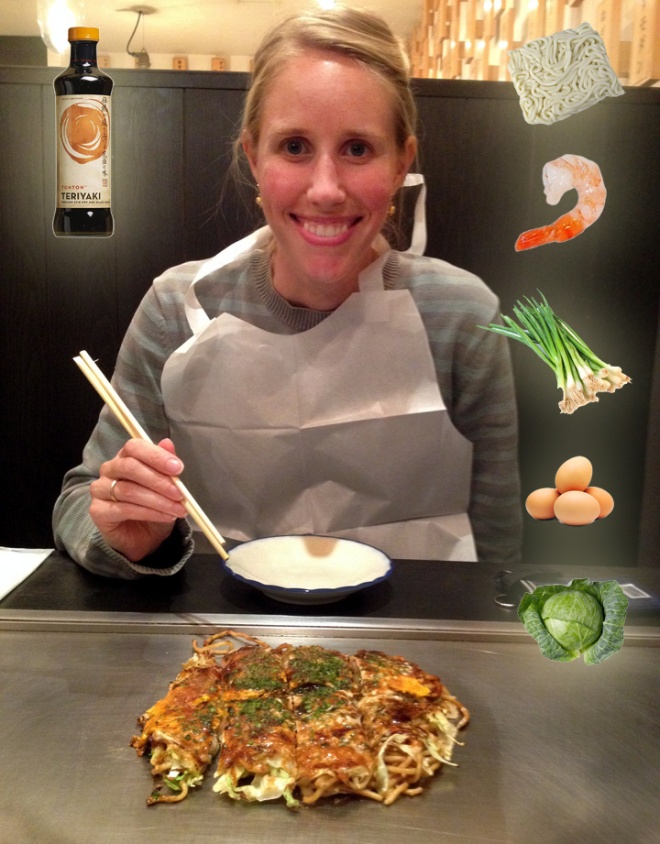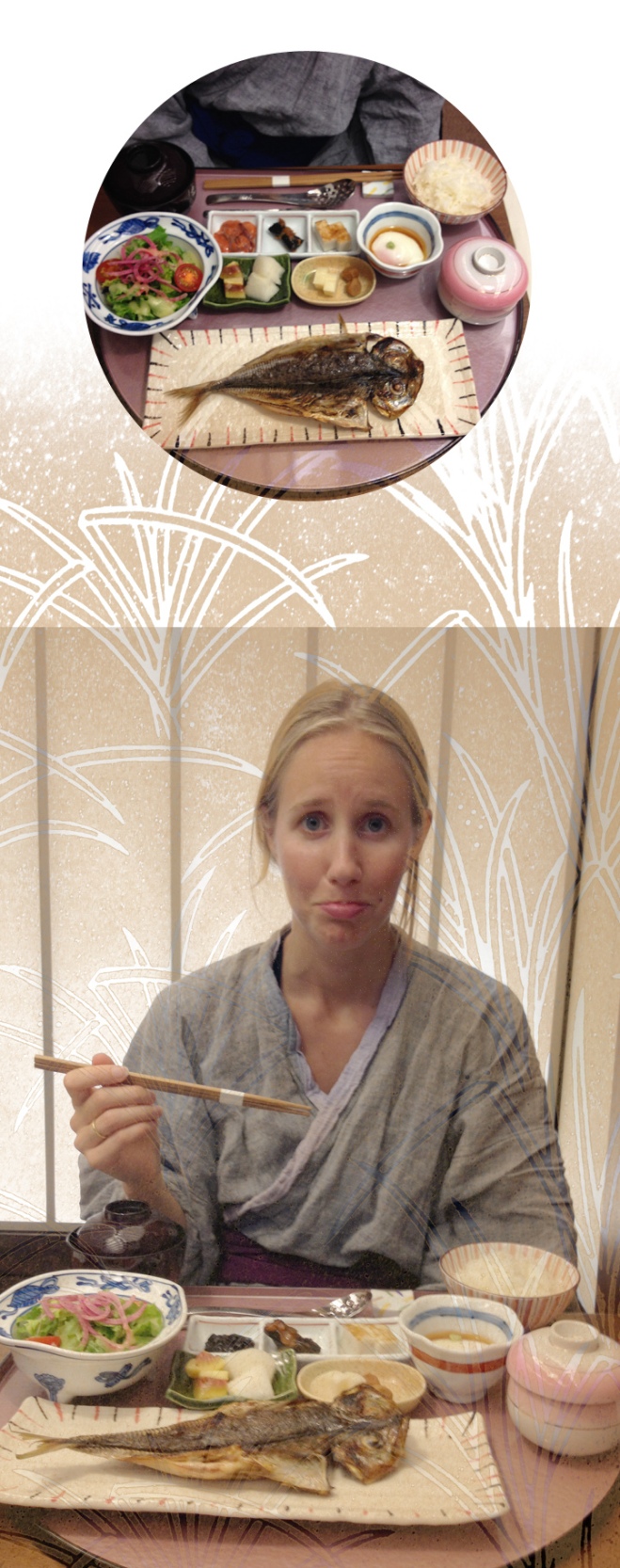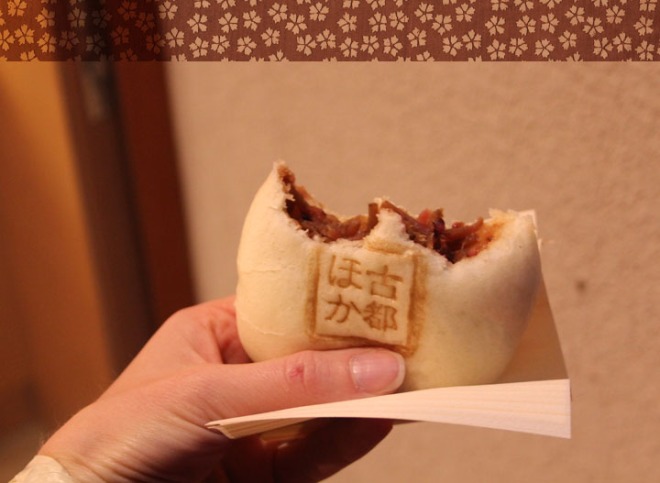Not gonna lie: we were worries about food leading up to our trip to Japan. We like sushi and tempura and fish and rice fine, but every day at every meal for 10 days? We were nervous. But turns out we didn’t have to be nervous about anything…well, almost. Japan has some weird notions about breakfast, but we’ll get to that later.
Packaging
Our first impression about Japanese food was: adorable packaging. (Well, that was probably Amanda’s first impression, being the visual design thinker that she is.) Everything is so intricately, excessively packaged, even in 7-Eleven corner stores (which are everywhere.) Second impression: Japan is the land of snack food. You just pick up whatever looks tasty from a street vendor, a small little cafe or boulangerie and get ready to enjoy your perfect little snack. And the cafes and boulangeries rival Paris in their frequency and quality of bread–well, white bread, pastries and croissants. Good luck finding fiber in Japan (but that’s probably another post.) But you could survive traveling in Japan without ever setting foot into a sit-down restaurant, and only buy snack foods, noodle bowls or whatever looks tasty as you walk around. That being said, you can BUY it on the go, but heaven forbid you should EAT it on the go. This is apparently a faux-pas in Japan. You must find some bench, seat or preferably, a park and eat your food there. Nice for life, but not so good for being tourists. We decided to retreat under the banner of ignorant-tourist and eat on the go anyway. We’re sorry Japan!
The practice in these bakeries is to take a tray, fill it with your selected baked goods that are arranged in bins around the perimeter, and then take the tray to the counter where they will double, triple bag them for you (separately, of course). And add the wet napkins packaged in sealed bag. And then add a sticker. And another bag. Germs will never get to that food! But, it’s a good thing you have all those bags, because you will be carrying around your garbage for most of the day until you locate a garbage bin.
So Good So Fast
Restaurants were awesome and our biggest takeaways were that they served you food SO FAST. We went to this one soba noodle place (that had been going on since the 1400s!) and the food was there in at least a 3rd of the time in restaurants over here. Even at this specialty burger place the food came pretty quick (and we were pretty happy to have a burger after a few days of rice, saucy-meat and limited veggies.) Oh, and you don’t tip or else they think you left money by mistake. And you’ll be in and out in an hour, tops.
 One of Amanda’s favorites: Okonomiyaki: Japanese “pancake”
One of Amanda’s favorites: Okonomiyaki: Japanese “pancake”
Then there was the sushi and sashimi.
 Kaiseki meal menu at Kai Hakone
Kaiseki meal menu at Kai Hakone
We decided against making the famous 4am trek to the Tsukiji Market (Tokyo fish market) to procure the freshest of sushi and sashimi. So, our first experience of the delicacies would be during our Kaiseki meal at our Hakone resort hotel. Amanda was prepared to decline, Sumimasen, Sashimi wa tabemasen. But, I, Graeme bravely ate it all: Eels, scallops, tuna, salmon, rainbow fish, these little pink round egg looking things. (Edit: turns out they are salmon eggs. Joy.) Washed it down with my first sake ever, as well. There was a nervous 3 hours post-meal where I was closely monitored in order to see if I was going to burst or barf or feel nasty, but I felt fine. There was a bit of a rumbly moment in the sauna that night, but I pulled through like a champ. As someone who has come from a less than oceanic province my knowledge and tolerance of fish is pretty limited, but my horizons have expanded a wee bit thanks to this trip. We unfortunately forgot our camera for the meal, but Amanda made little sketches of each dish on the rice paper English menu.
Japan doesn’t really do breakfasts.
Oh, I mean they have food at the beginning of the day, but they just have the same food they’d have at any other time of day. Fish. Rice. Soup. Salad. This was hard for us. We either had to degrade ourselves and go to some western looking cafe that heavily advertised Western Breakfast Panini, or a Starbucks with all the other tourists and sheepishly not make eye contact so as to not admit our weaknesses. It was relatively ok when breakfast was in our control. We could go to a corner store and get some yogurt, find a pastry and talk about how we would murder a bowl of Bran Flakes when we got home. But at our super nice fixed menu hotel, the realities of Japanese style breakfast was unavoidable. Also unavoidable was Amanda’s expression. Rice, steamed fish and soup. No fiber in sight! How do the Japanese poop! (Besides, in supreme comfort.) We broke down on day 3 and bought a huge bag of muslix from the grocery store and peppered that stuff into every meal.
 Western breakfast augmented by American granola bar
Western breakfast augmented by American granola bar

The Japanese breakfast menu at Kai Hakone
 The breakfast menu at Kai Hakone
The breakfast menu at Kai Hakone
 French Onion Soup (Elle Cafe), Coffee, Tea Ice Cream, Street food at its best: warm, hot off the grill, gooey rice/bean ball.
French Onion Soup (Elle Cafe), Coffee, Tea Ice Cream, Street food at its best: warm, hot off the grill, gooey rice/bean ball.
Vending Machines
A sensually-rich experience. But how does that coffee taste?










Heh, yes we’ve wondered that as well; fiber is hard to come by, and fresh vegetables are expensive. Just got to eat a lot of apples, which are reasonably cheap. Gotta show my wife the hedgehog breads… She’ll love them!
Oh yes @Lois, how I wish I could have one of those fruit tarts to decorate my counter. And then I would eat it!
I’m enjoying your photos of the trip to Japan. Reading your blog does make me hungry though. Thanks for the wonderful photos and commentary.